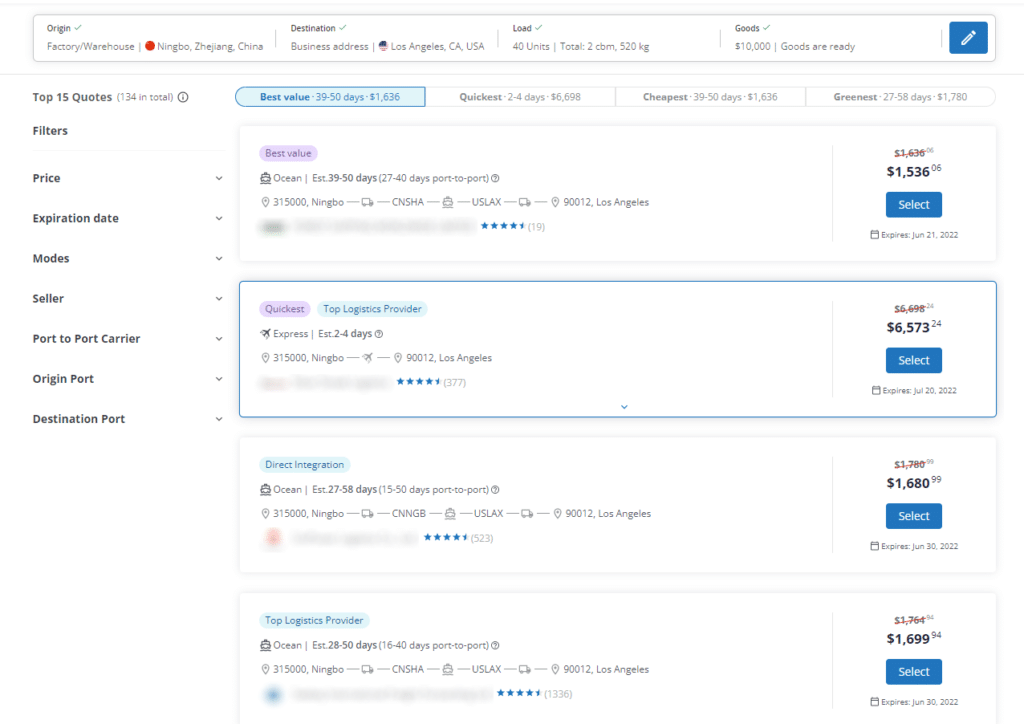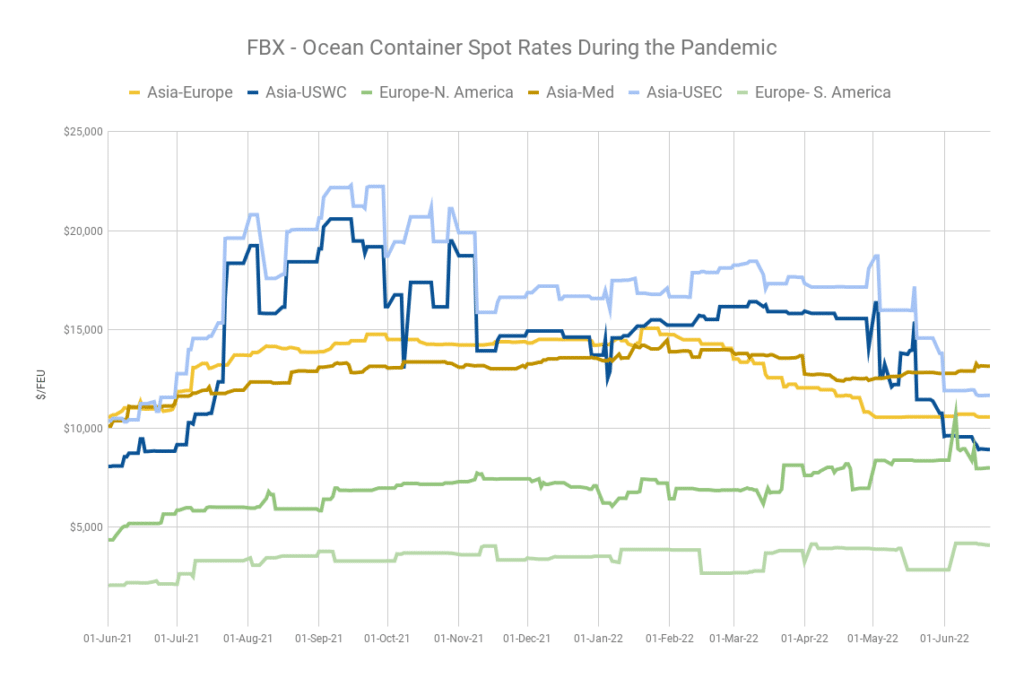What are spot rates in shipping?
Spot shipping refers to freight shipments booked without a contract. In other words, each shipment is booked individually at its own price.
Smaller businesses have historically relied on spot rates, but pandemic-related supply chain disruptions have made them increasingly important for frequent shippers as well. That’s because unpredictable freight rates, port congestion, and fluctuating demand have all made contract rates less reliable.
For any shipper, the advantage of spot rates is the flexibility to choose the right rate for each shipment.
Read on for five tips to ensure you’re getting the best spot shipping rates for your freight.
#1: Compare prices – but know what you’re comparing
Shipping rates differ widely depending on the forwarder or logistics service provider. Comparing quotes from multiple forwarders allows you to find the best price for your shipment, but it’s important to know what is included in different quotes.
Get quotes from more than one freight forwarder
By requesting rates from multiple freight forwarders, you can compare the price, routing, and estimated transit time.
But make sure you’re comparing like-to-like with the services included for each quote. Some forwarders may offer very low prices up front – but that could mean paying more in additional charges later on.
Get a detailed breakdown of what’s included in the price quote
In order to compare prices accurately, make sure your price quote is broken down by service.
Look out for these details:
- Correct port pairs and origin and destination details
- Sea freight charges
- Custom clearance charges
- Warehouse and transportation charges
- Port charges and equipment fees
- Additional services (such as tracking and certificate of origin)
Note: When you search for rates on Freightos.com, you will automatically see a comparison of different rates with each one broken down by service.

Image: Spot shipping rates on Freightos.com for an LCL shipment from Ningbo (China) to Los Angeles (USA)
#2: Be flexible with shipping mode and lane
Another way to find the best spot quotes is to get creative about your shipping route. Closures and congestion on your usual shipping lane are frustrating – but there might be other ways to keep your goods moving.
Consider the following:
Shipping mode
- Do you typically ship air? If you plan in advance, you could ship some goods by sea to save on costs.
- If your regular destination port has a congestion backlog, try shipping to a nearby port and trans-loading your goods to rail to bring them to your warehouse.
- If you normally ship FCL, consider splitting into smaller LCL and air shipments to get better spot freight rates and keep your inventory moving.
Shipping lane
In 2020, the average shipping time from China to the US was 40 days. In 2022, some shipments are taking 90 days to arrive. Flexibility with shipping lanes and routes can help avoid congestion, saving time and costs.
For example, if you usually ship from Shanghai to the US East Coast and that route is bogged down by delays, consider shipping to the West Coast and using inland transport for last-mile delivery.
Choose a reliable freight forwarder
When you choose a new shipping lane, make sure to also choose a freight forwarder with services and expertise on that lane. Not all freight forwarders work on all routes, so check to make sure you can get the services you need.
#3: Provide accurate shipping details
Proper documentation and forms can prevent shipment delays and extra charges including demurrage and detention fees, additional equipment fees, and warehousing charges.
Here are some details to look out for:
Accurate Measurements & Labeling
About 25% of charges added after booking result from incorrect measurements.
While you may get a ballpark spot freight rate with only origin/destination, container type, and pickup dates, without specific details about your shipment, you may end up paying for extra services later. To avoid this, make sure you specify:
- Origin and destination zip/postal codes
- Pickup and delivery dates
- Container type
- Commodity type
- Product dimensions
- HS code
- Special attributes (if any)
Ensure Proper Licencing
Classify your goods correctly and make sure you have all the permits and licenses in place for customs clearance — including those required for hazardous goods.
Check the U.S. Customs and Border Protection website for information about regulations and compliance for specific products for customs clearance. For example, if you’re importing food items, you need a certificate from the FDA.
Account for special requirements
Does your shipment need special product handling, extra packaging, additional equipment support, or any non-standard service before or during shipping? Communicate these needs beforehand to avoid service disruptions, expensive accessorials, or extra charges.
#4: Use a marketplace
Finding and reaching out to different forwarders for spot quotes can be time-consuming. Using a marketplace saves time and money by providing the following:
Market visibility
Marketplaces consolidate data from various service providers. That means you can compare delivery times, prices, and service standards across the industry – and choose the best option for your shipping requirements.
A clear picture of price trends
With a marketplace, you can get a sense of market standards and see if your price quotes are too high or low – which could signal fewer services and additional charges down the road.
Transparency
By using a freight marketplace, you’ll get full transparency into what each quote includes. Since quotes are standardized, you won’t have to guess about the level of service. That makes it easy to compare prices and to figure out exactly how much each part of the quote costs.
#5: Keep seasonal trends in mind
When you book spot rates, keep in mind that freight costs fluctuate by season.
Typically, August to October is a peak season for ocean shipping as businesses stock inventories for back-to-school and holiday shopping. Additionally, many east Asian factories and manufacturers shut down for the Lunar New Year in late January or early February, which can lead to a short period of congestion and elevated prices.
Spot Shipping Rates By Major Routes

Image: spot rates on major shipping lanes from June 2021-June 2022
Spot Freight Rates In A Nutshell
Finding the best container spot rates will optimize your shipping and operational costs.
Getting competitive spot freight rates is very doable. Don’t forget to provide accurate information when requesting quotes, be flexible about your mode and lane, make sure you compare quotes — and what’s in the quotes — to get the best deal.



